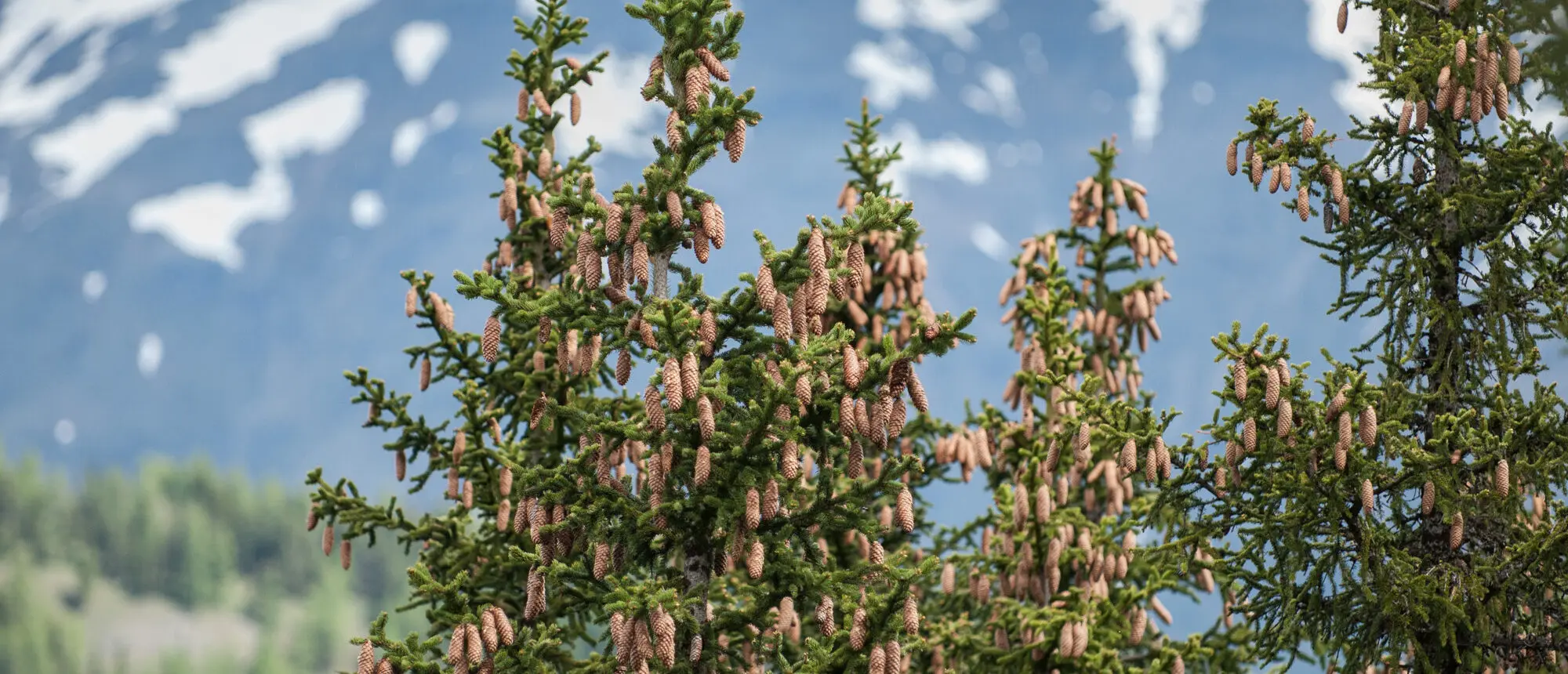In the National Park, there are practically no forests where only spruce grow.
In the National Park there are fewer spruce than in other regions of the Alps. Stands of spruce alone are very rare. However, on the shady slopes of the main Engadine valley, mixed forests of larch and Norway spruce are widespread.
In areas exposed to large amounts of snow, such as to the south of Punt Praspöl, Norway spruce grow in an adapted form that is normally only seen in far northern areas. More slender than usual, and with short branches, snow cannot accumulate. In German these trees are called «Schlangenfichte» (snake-spruce).
Norway spruce grow straight and fast, and are therefore often used for timber.
Unlike mountain pines and larches, spruce require very little light for germination and growth.
In a dense mountain forest such as that at Plan Praspöl (route 8) young spruce and cembra pines grow more easily than larch and mountain pines which require a lot of light. In some places growth may be affected by browsing.
The dark-green evergreen needles are arranged singly around the branches and are only dropped after about 6 years. Seeds ripen in the hanging cones and are spread by the wind in the autumn, after which the cones fall to the ground.


